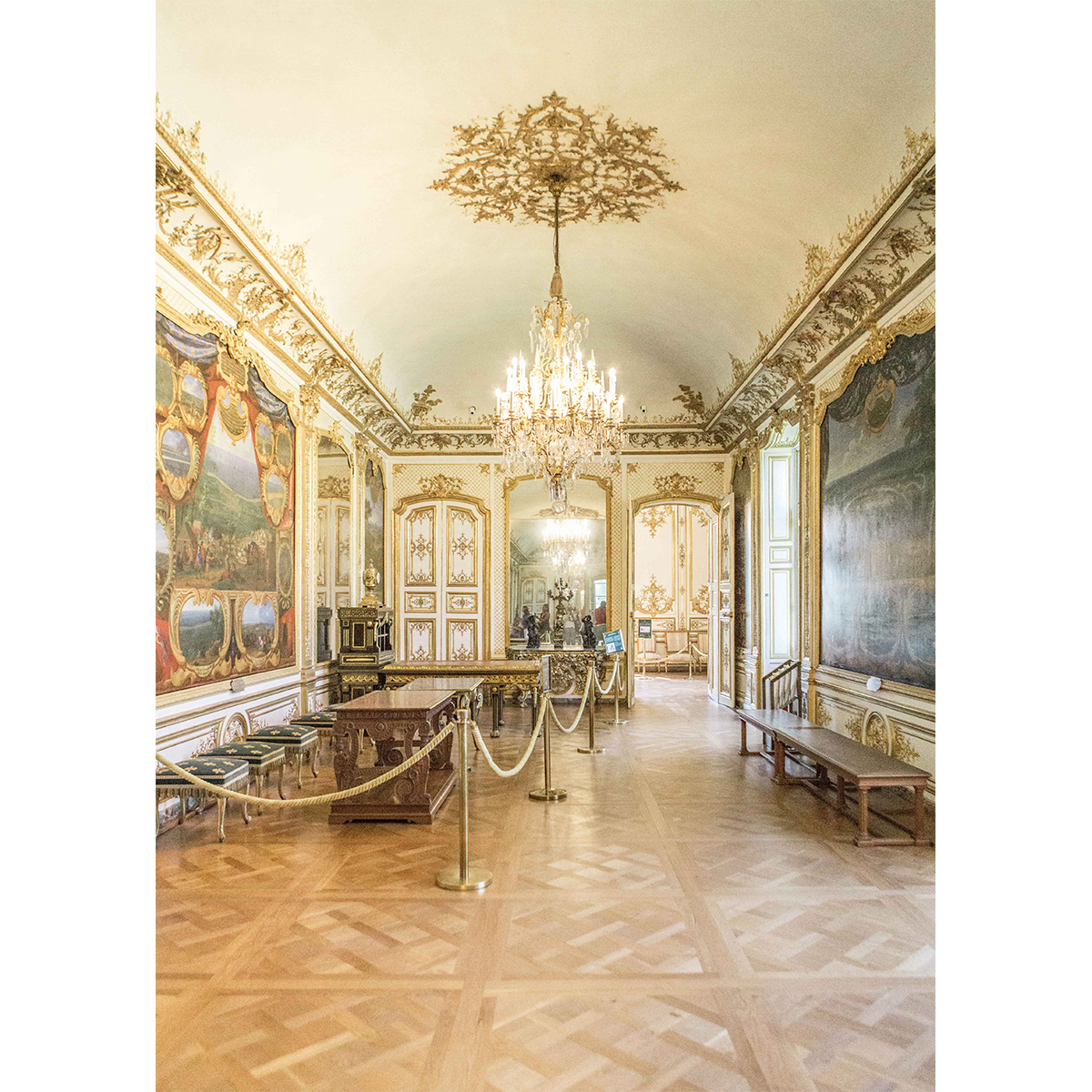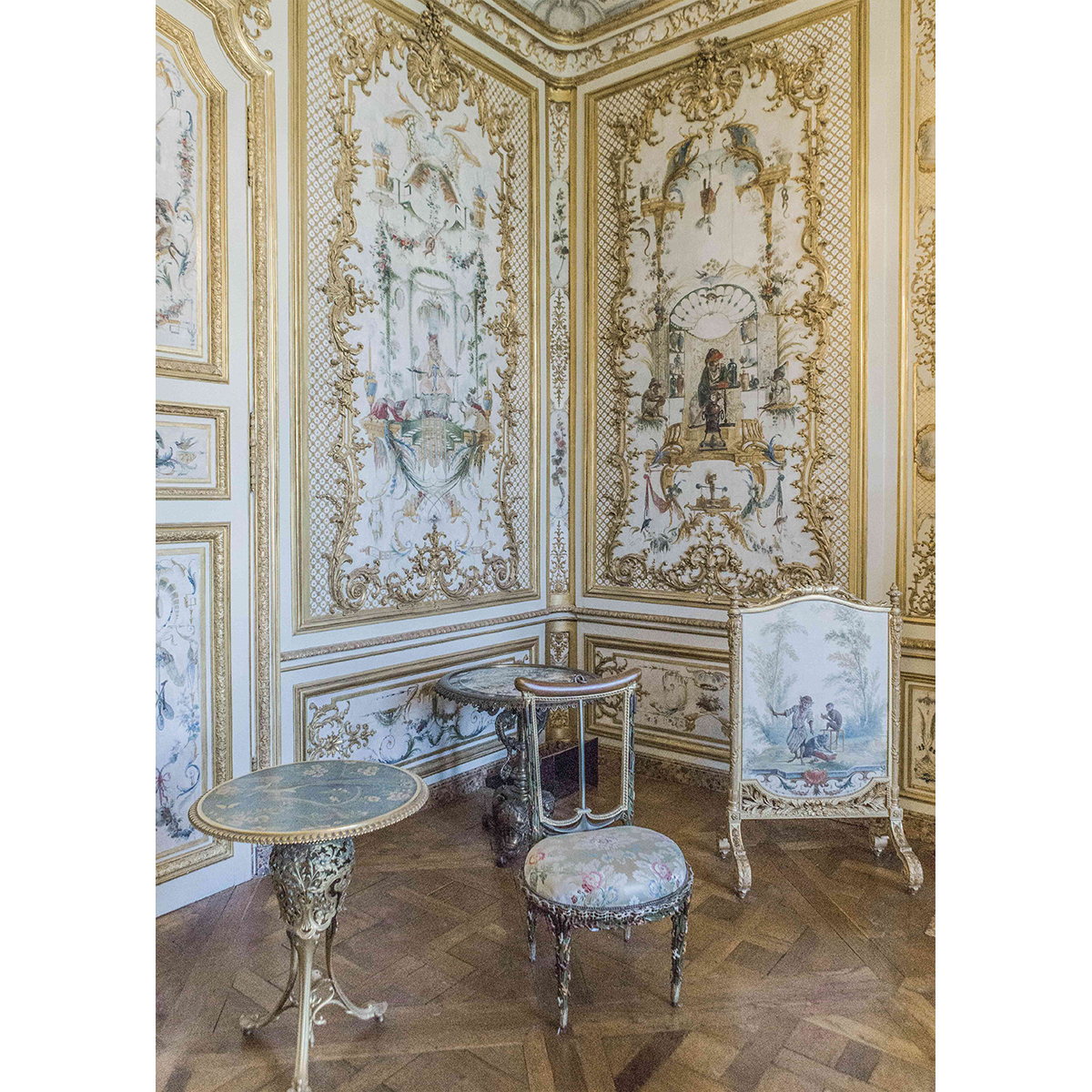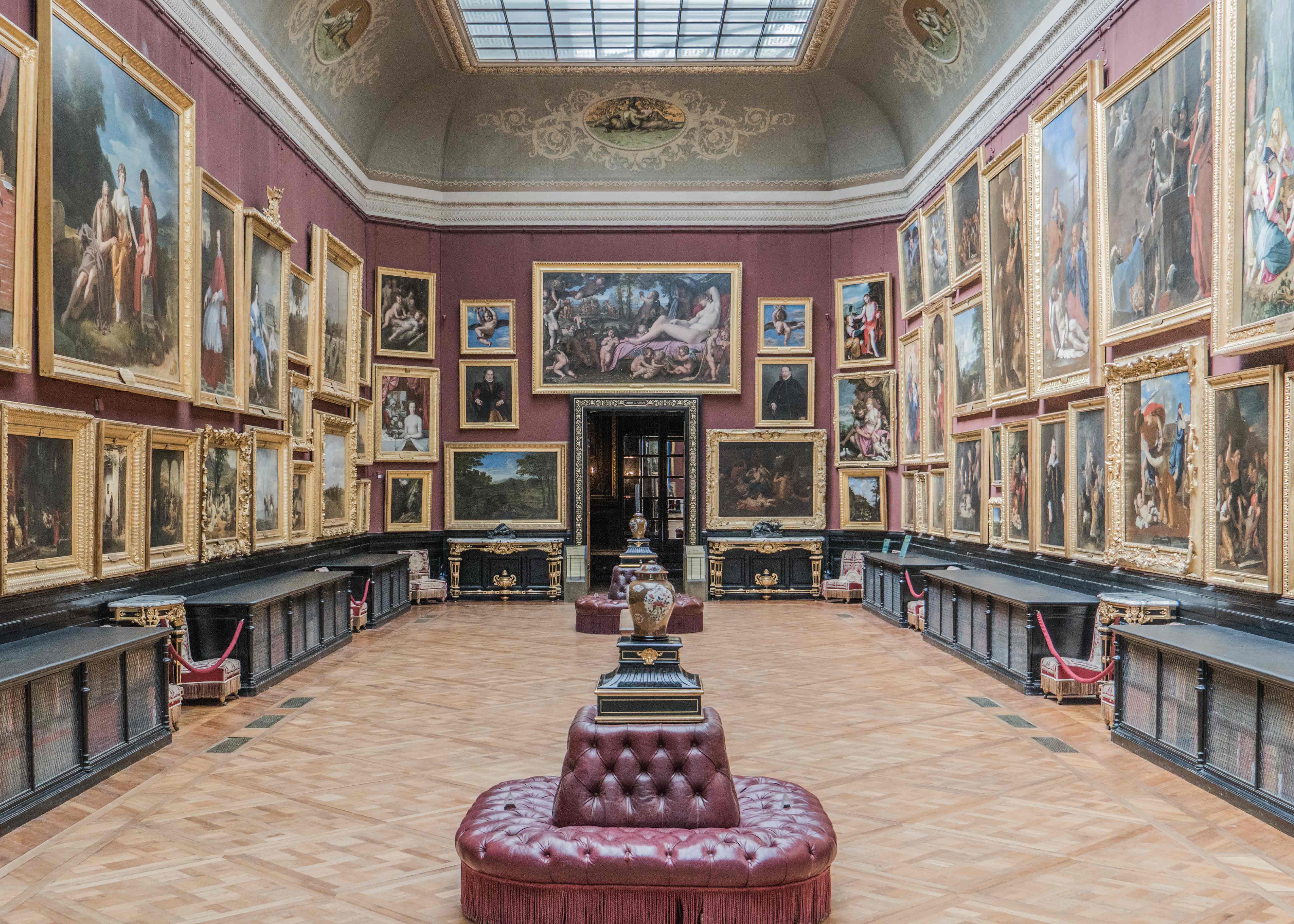
.jpg)
CHANTILLY CASTLE (CHÂTEAU DE CHANTILLY)
Address: Château, 7, Rue du Connétable, 60500 Chantilly
Opening hours:
- Low Season:From 2 November to 23 March included, every day except Tuesday from 10.30 am to 5 pm (gardens close at 6 pm);
- High Season: From 24 March to 29 October included, every day from 10 am to 6 pm (gardens close at 8 pm)
Tickets: full price 17,00 €, half price 10,00 € (3-17 year old children, students or disabled )
How to get there:
- By train: From Paris Gare du Nord SNCF main lines (25 minutes), get off at "Chantilly-Gouvieux"(www.voyages-sncf.com)
- RER line D (45 minutes), get off at "Chantilly-Gouvieux"(www.transilien.com); Check timetables on: www.oise-mobilite.fr
Official website: http://www.domainedechantilly.com
.jpg)
Chantilly Castle, located on the northern outskirts of Paris, was built in 1358 and is a treasure of French heritage. This is considered the work of Duke of Aumale, Henri d’Orléans, son of Louis-Philippe, the last king of France. He was the greatest collector and art lover of the period, because of him, Chantilly Castle has a massive collection of masterpieces.
The collections here are include precious books, jewellery and famous paintings from different eras.
.jpg)
In 1886, the castle was bequeathed to the Institut de France by the Duke of Aumale. However, he provided that it became a museum open to the public and that all items must remain in their original position. To commemorate the outstanding Prince of Condé of the Bourbon dynasty, this castle was named by "Condé Museum".
In 2011, the film "Chinese Zodiac" of Jackie Chan became the first film crew which was allowed to enter this castle, therefore it is very famous in China.
.jpg)
PRINCE'S BEDROOM
On the first floor, the large suites show the reception and residence of the princes of the Bourbon dynasty. They are typical examples of interior decoration in the eighteenth century: a variety of art treasures, royal furniture and master paintings. During the French Revolution, part of it was destroyed. The Duke of Aumale restored it in the 19th century. He collected a large number of royal art and precious furniture in order to restore the grandeur of Bourbon dynasty.
The prince's bedroom is the entrance to the large suites. The white and gold paneling is a characteristic of the early Rococo style. The woodwork was designed by architect Jean Aubert around 1720 for the seventh prince, Louis-Henri de Bourbon. Unfortunately, some of the original furniture was scattered during the French Revolution, and the Prince's room lost the four-poster bed.

THE GALLERY OF BATTLES
This is the largest room in the suites. A total of 11 large-scale oil paintings were exhibited in chronological order, showing the victory of the Prince Grand Condé in the war.

THE GRAND SINGERIE
This is a very interesting room in the suites, where you can see monkeys painted with Chinese style on the wall.
In fact, this type of humorous picture of monkeys, "Singerie", fashionably attired and aping human behaviour, was painted by a number of French artists in the early 18th century. The mural in this room is one of the most famous Singerie murals in the art history, created by the famous animal decorator Christophe Huet in 1730.
The Chinese-style costumes present the popularity of “Chinoiserie” in the 18th century in Europe. There is a La Petit Singerie next door.

THE ART GALLERIES
This gallery is in the heart of the entire museum, with special collections of the Dukes of Aumale. It is a journey back in time and a good opportunity to explore the history of the museum. According to the personal wishes of the Duke, all the works here have remained unchanged since the 19th century.
Nearly 85 paintings in the gallery are arranged according to the personal taste of the Duke. Here you can find the original of Raphaël, and the work of the French romantic painter Eugène Delacroix. It is the second largest collection of antique paintings in France, after the Louvre Museum.
.jpg)
Surprisingly, at the end of the gallery there is also a rotunda that shows the masterpieces of the Italian Renaissance.
.jpg)
THE READING ROOM
In addition to collecting artworks, the Duke of Aumale also has a hobby to collect books. Just around the corner of the museum, there is a beautiful library with an amazing amount of books. The Duke of Aumale made acquisitions in auctions and to booksellers throughout Europe.
Almost 19,000 volumes are exhibited in the Reading Room, including 1,500 manuscripts and 17,500 printed documents on the subjects of universal knowledge, especially a large number of medieval works. It is said to be a paradise for book lovers.
.jpg)
THE GARDEN
Outside the Chantilly Castle, this 115-hectare garden cannot be missed. The garden is divided into three characteristic themed areas - the 17th century, the French garden designed by André Le Nôtre, the Chinese garden built at the end of the 18th century, and the English garden built in the early 19th century. Lakes, rivers, fountains, trees and grasslands are perfectly combined.
.jpg)
Next to Chantilly Castle, the Great Stables, one of the largest stables in Europe is worth visiting. It was built by architect Jean Aubert in 18th century. There is a vast racecourse next to it, and there are equestrian shows all year. Inside there is a museum of the Horse which opened in 2013. The artworks presented here are designed to reveal the importance of the relationship between man and horse .
Written by Lexi Wang
Photographed Lexi Wang & PHAN Thanh Thuy